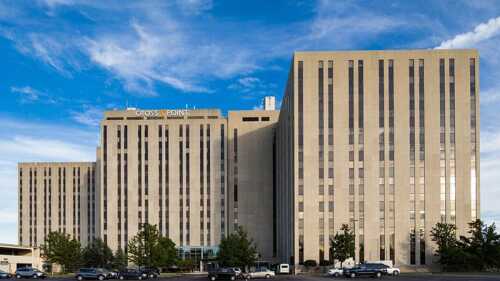Office - Buildings
Companies may be starting to see that squeezing more employees into less space is starting to be counterproductive, but panelists at ULI’s 2018 Spring Meeting agreed that expansive offices were largely a thing of the past, especially with wireless communications and cloud-based applications increasingly allowing employees to get much of their work done off site.
A panel of experts at a ULI Washington event said that thriving suburbs will continue to become more walkable and dense where appropriate, with fewer big-box stores surrounded by parking lots.
The new ULI Real Estate Economic Forecast is taking a more bullish view on the U.S. economy—at least for the remainder of this year. As compared with the fall survey, key indicators such as gross domestic product (GDP) growth, jobs, and the Consumer Property Price Index (CPPI) all trended higher. But that boost may be short lived with growth tapering in 2019 and 2020.
Commercial real estate lending markets remained on the upswing in Q3 2017 with rising equity prices, limited volatility, and tightening spreads, according to the latest research from CBRE.
Lowell, Massachusetts, received a major boost in ongoing efforts to transform into a center of innovation when Kronos—a homegrown Massachusetts workforce management software and services company—decided to relocate its global headquarters, taking a half-million square feet (46,500 sq m) close to the city’s revitalized downtown.
Big data is becoming an important part of the real estate business, said Goh Kok Huat, COO of GIC Private Limited, formerly known as the Government of Singapore Investment Corporation, speaking at the ULI 2017 Asia Pacific Summit.
Cranes fill the sky and construction crews complicate navigation through Seattle’s streets as development projects downtown and in other close-in urban neighborhoods usher in a higher and denser city.
Downtown office properties are no longer disposable, throw-away structures with just a 30-year life span. Today, adaptive use initiatives are revitalizing buildings, changing the purpose of the towers to meet current market demands and extending the buildings’ useful life by many decades. At the 2016 ULI Fall Meeting in Dallas last month, panelists demonstrated the case for redeveloping downtown properties.
AF Bornot Dye Works is a loft apartment and retail project in central Philadelphia that involved the adaptive use and restoration of three timber and concrete factory buildings. The capital stack assembled for this project was unusually complex, partly because of its unusual mix of uses, its location outside the Center City core, and the challenges posed by historic rehabilitation.
Economists see a pretty good year ahead for real estate, despite a weak world economy. “The data [are] good, but we all feel this uncertainty,” said Jeffrey Havsy, chief economist, Americas, CBRE Econometric Advisors. He spoke at a panel discussion of the semiannual ULI Real Estate Consensus Forecast, as part of a members only webinar.





